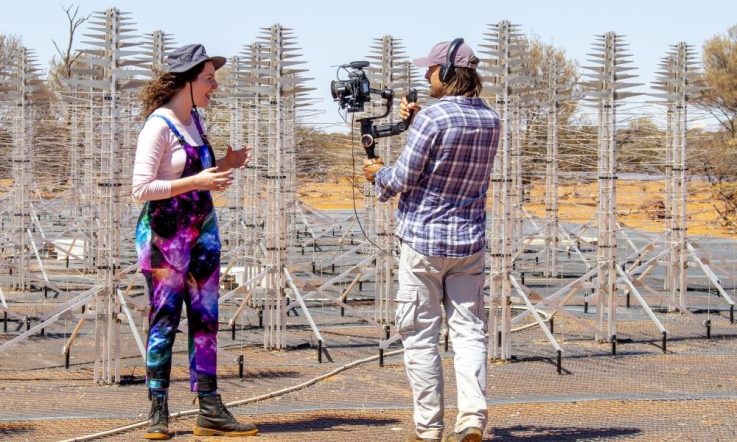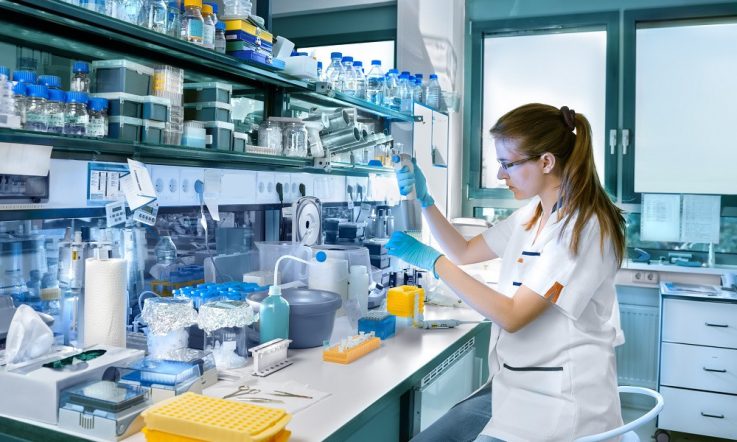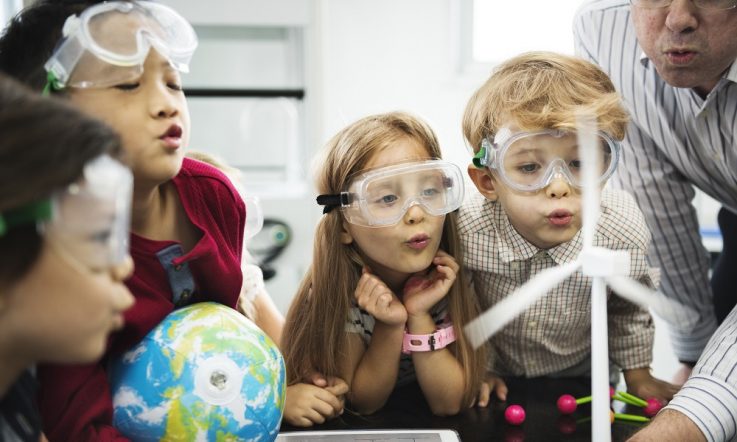In the latest episode of our podcast series The Research Files, we spoke with Dr Kathryn Ross about the new open-access report, Invisible women: Gender representation in high school science courses across Australia she co-authored as lead researcher. The research analysed the Biology, Chemistry, Environmental Science and Physics courses in the senior secondary curriculum across the country and found only one woman, Rosalind Franklin, is mentioned, compared to 144 male scientists.
‘It's just a pervasive, unconscious bias that we have of science as done by men, science as only ever been done by men, and women have played no role and continue to have no role in science – and that is just fundamentally incorrect,’ Dr Ross says in the episode.
‘It's just so stark that we have this view we’re teaching our students that if you're a young girl and you're interested in science or you want a career in science that ends for you at high school, you have no future in science beyond high school; that's what we're telling them with this curriculum, and it's just so heartbreaking to see it in just such clear statistics.’
Queensland primary school STEM teacher Megan Hayes has been recognised for her work that’s seen girls’ participation in STEM increase in her school. The Mudgeeraba Creek State School teacher was named winner of the 2021 Prime Minster’s Prize for Excellence in Science Teaching and she joined Teacher for an episode in our School Improvement podcast series in 2022 to discuss the successful initiatives she’s implemented at her school to improve STEM participation and outcomes for female students.
In light of this new research, reflecting on why she is passionate about girls’ participation in STEM, Hayes tells Teacher that the first thing that was evident to her when she began teaching in the STEM field was the waning enthusiasm for STEM in girls as they moved through the primary years.
‘That was a personal observation,’ she shares. ‘I noticed that in the early years the girls were really enthusiastic and as fearless as the boys, but by the time they reached the upper years there was a real change in their attitude about the way they engaged with lessons and topics and discussion.’
Female figures in STEM
Dr Ross says having authentic and relatable role models is crucial for students to feel like they can pursue a career in STEM. ‘These role models are really, really important for people to be able to picture themselves at every stage towards a STEM career and be able to see themselves pursuing that,’ she says in our podcast episode. ‘We need to have enough representation that all students can find someone that they can actually relate to and aspire to in STEM.’
Further, the curricula analysed in her research spoke about sharing a diverse range of scientists and the prioritising of Aboriginal and Torres Strait Islander histories and cultures. However, they found over 75% of mentions in the curricula of scientists came from Europe, and not a single Australian was mentioned at all.
In her primary STEM classroom, Megan Hayes focuses on people students can relate to, which includes Australian and First Nations female scientists. ‘I think it's absolutely essential to introduce all the students to the contributions of females in STEM. This helps to inspire and empower all students regardless of their gender, but also fosters inclusivity,’ she says.
Two female astrophysicists she shares with her students are Australian Government Women in STEM Ambassador, Professor Lisa Harvey-Smith, and Gamilaroi woman Karlie Noon. ‘I always try and hold up these women who work or are studying in these diverse fields. I engage with them in different ways so the girls can see that this is a pathway that they can take.’
Alongside these instances of explicitly teaching students about local and Australian female scientists, Hayes also tries to allow for students to learn about women in STEM seamlessly throughout the curriculum in an authentic way.
‘For example, in the past, in year 6 we were focusing on the impacts of the Australian bushfires in recent years. [Students] were really interested in not only the impact of the fires on our natural flora and fauna but to humans. And along the way their work actually led us to the work of Professor Fiona Wood … she's a plastic surgeon in Australia, best known for her pioneering role in the development of spray on skin, which is a revolutionary treatment for burns victims.’
‘And for the students to see that the work these women are doing, they can see the connection with the real world … [they] were interested in what was happening as an impact of something that was so close to home for a lot of them.’
The power of local connections
Hayes shares that her connections with feeder high schools and local universities have been paramount to her ability to expose students to female figures in STEM. She’s established connections with local women working in different fields of STEM by contacting Griffith University, and she also has a collaborative relationship with other local schools.
‘Bringing the schools together in some small way shows that you’re not just working in a silo, you’re working with other teachers, and sharing their ideas, and you have more power to contact people if you're working across schools, than across your own school.
‘I have a fantastic relationship with our local feeder high school, and it is very obvious that Mudgeeraba kids are taking up [STEM subjects in high school],’ she shares.
Schools in the region also come together for a regional STEM meeting each term, which gives colleagues the opportunity to see what’s happening in other schools, share ideas and listen to guest speakers.
‘I recently had a conversation … with a colleague who had been invited to do a talk about the research in the AI realm. And she pointed out that as educators using AI, or maybe using it in the future, that we really need to be aware of this gender bias that is present when using it … so, you have to be really aware of that. And I think just being aware of that in a classroom has a powerful effect on the messages that you're giving to students.’
Resources for the early years
With students in the early years, Hayes has had success in using more age-appropriate pedagogy, such as storybooks that focus on a female in a STEM role or a female as the character that finds a solution to a problem.
When she started in her role 8 years ago, Hayes says she began following teachers from across the globe on social media to get ideas for resources and lesson activities. A book she’s enjoying using with students at the moment is one she stumbled across by chance in the children’s section of a local bookshop. ‘[It’s] called She Persisted in Science written by Chelsea Clinton … and it is brilliant because it shows, from a women’s perspective, all these amazing people in STEM.’
She uses this book as a springboard for a lesson with students about how a scientist can be male or female.
Reflecting on an activity she’s being using for years now where children are asked to draw a scientist, Hayes says: ‘Of course they drew the normal male stereotype, but fast forward [to] last year, I did it with my year 1’s to see where we are and what has changed, and they drew themselves, which was amazing.’
References
Ross, K., Galaudage, S., Clark, T., Lowson, N., Battisti, A., Adam, H., Ross, A. K., & Sweaney, N. (2023). Invisible women: Gender representation in high school science courses across Australia. Australian Journal of Education, 0(0). https://doi.org/10.1177/00049441231197245
Reflecting on this school year, think about the role models you included in your lesson plans to share with students. Were these role models authentic and relatable? Was there a gender imbalance in the role models you presented?
Is the work of Professor Lisa Harvey-Smith, Karlie Noon and Professor Fiona Wood relevant to any elements of the curriculum you teach? If so, how could you incorporate their work into your lesson plans for the upcoming school year?



